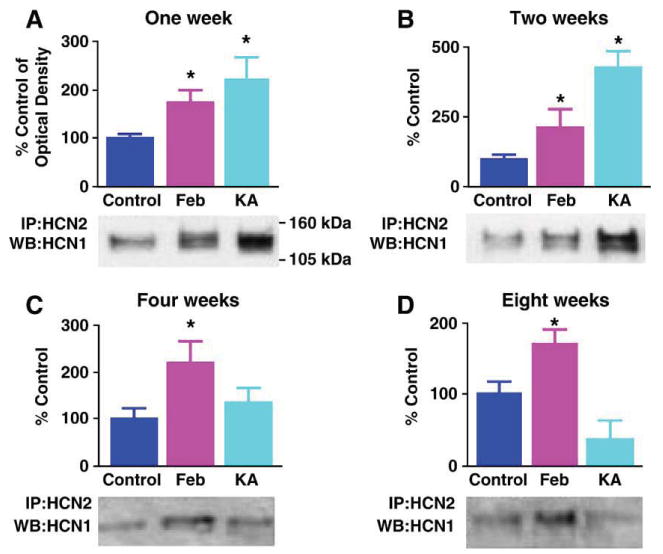Fig. 5.

HCN1/HCN2 co-precipitation is greater in prolonged kainic acid (KA)-evoked seizures as compared to the shorter experimental febrile seizures. However, the increased HCN1/HCN2 heteromerization endures long term only after the latter. Quantitative analysis of Western blots (WB) probed for HCN1 of hippocampal extracts immunoprecipitated (IP) with anti-HCN2 at several time-points after ‘febrile’ and KA seizures. (A and B) One and 2 weeks after seizures, the Western blot (bottom) and quantitative analysis (top) show significant co-association of HCN1/HCN2 in both seizure groups, that is significantly more robust after ∼180 min of KA seizures (n = 5 per group). (C) By 4 weeks after the seizures, enhanced heteromerization of HCN1/HCN2 is significant only in the febrile seizure group (n = 4 per group). (D) Eight weeks after these developmental seizures, co-association of HCN1/HCN2 persists in the group subjected to experimental prolonged febrile seizure (P = 0.04), whereas the KA group is not significantly different from the controls (n = 4 per group). *Denotes significant difference from the control group. The KA group is significantly different also from the Feb group at this time point (P = 0.01).
